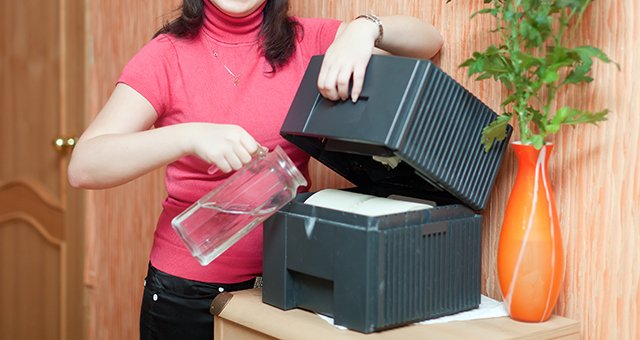In just the same way as other electronic devices in the home, your humidifier requires ongoing maintenance to ensure that it stays in good working order. A humidifier helps to maintain the optimal level of humidity in your home by increasing the amount of moisture in the air, and there are several types available including reservoir, flow-through, console style and free-standing models which may either serve the whole house or a single room depending on type. A humidifier is very beneficial during the winter months as it can resolve many of the issues that are triggered by dry air including itchy skin, respiratory problems and excess static electricity. It is important however to keep your device working properly in order to avoid it becoming a hazard, so here are some maintenance tips for humidifiers.
Keep It Clean
Humidifiers run the risk of growing mold and bacteria, therefore you need to ensure that you regularly clean all of the components of the unit and regularly change the water to avoid harmful spores being released into the environment as stagnant water will allow bacteria and mold spores to breed and thrive. On a daily basis, you should empty your unit’s water reservoir and wipe it down before refilling it with fresh, clean water. Every few days, use a mild cleanser and a soft bristled brush to clean the inside of your humidifier’s water tank and wipe its exterior with a damp, clean cloth. You should always wait for the components to be completely dry before refilling with water and switching on. A natural cleaning solution is the best choice, especially for those who have asthma and allergies, as a chemical based solution can leave an unpleasant residue or odor which can aggravate symptoms. Using white vinegar as a cleaning solution is a good choice as it deodorizes and disinfects while eliminating the build up of minerals.
Avoid Using Tap Water
Tap water contains minerals which can cause a dust-type film to be created in the humidifier. To avoid this, use either demineralized or distilled water in your humidifier as it contains fewer minerals than standard tap water and therefore will produce less white mineral dust to be pumped into the air inside your home.
Germicidal UV Lights
If you invest in germicidal UV light units you will find that they are able to sanitize the water inside the tank, killing pathogens and bacteria before they can be released into the environment.
Problems Caused By Unmaintained Humidifiers
If you fail to maintain your humidifier properly, you may find that any symptoms that you are suffering become much worse, and you may even develop a condition called humidifier fever or hypersensitivity pneumonitis. This lung condition is caused by the inhalation of bacteria-filled vapor and produces unpleasant symptoms including a fever, cough, chills, aches and pains, inflammation of the lungs, malaise and shortness of breath. Once the cause has been identified and rectified, the symptoms will go away, however if you continue breathing contaminated air, chronic symptoms may develop including scarring of the lungs, respiratory infections and weight loss. Get the best humidifier by reading reviews on this site.
